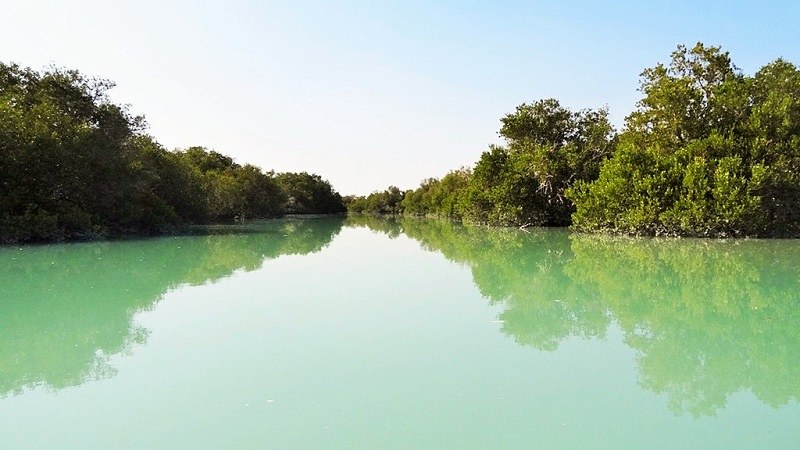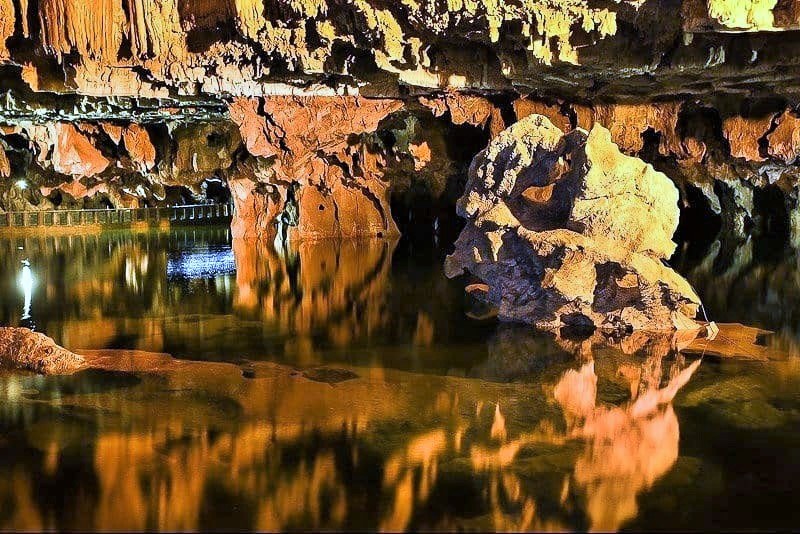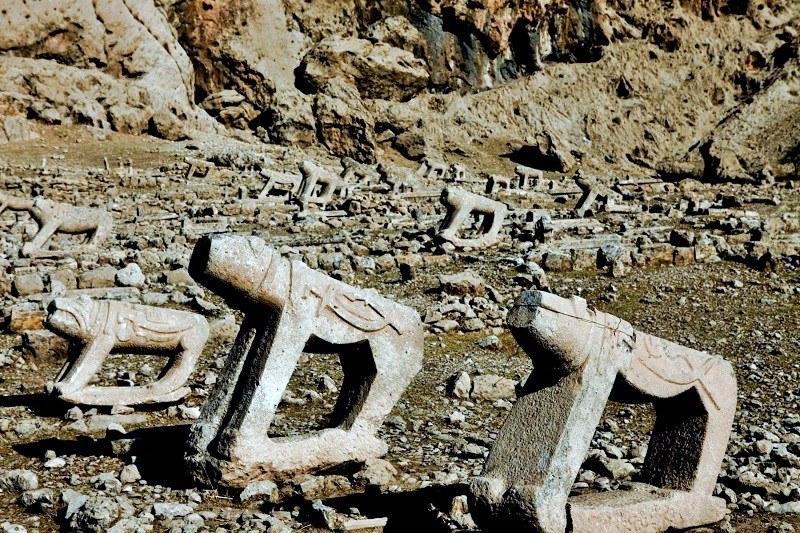
To learn about the natural historical landscape of Izeh, You should learn about this city first. Izeh is located in the Khuzestan Province of Iran. It is one of the main cities of Iran populated with a large number of Bakhtiari tribespeople. According to archaeological researches, the city dates back to the Elamite era. Izeh is also known as the capital of the Bakhtiari Tribe.
It was also the capital of the Atabakan Government. In addition, it has attracted the attention of kings and dignitaries of the past due to its special geographical and political status.
The average annual temperature in the city is 24°C and the average annual precipitation is 694 mm. It is 835 meters above sea level. Archeologists have found inscriptions in the city depicting women alongside men for the first time.
Therefore, the above factors have contributed to the formation of the natural historical landscape of Izeh, which we will look into further.
The Monuments in the Natural Historical Landscape of Izeh
There are many monuments that remained from the Elamite period in Izeh. These monuments are divided into two categories: Ancient Elam and New Elam.
Shahsavar Relief
This ancient site is located on the outskirts of Izeh. In this ancient area, there is a relief dating back to the 20th century BC (Ancient Elam Era). This relief depicts a scene of Bara’am, an Elamite king. Next to this relief, there is a cemetery called Shahsavar. In the cemetery, there are graves with stone lions of Bakhtiari area.
Khunag-e Azhdar Relief
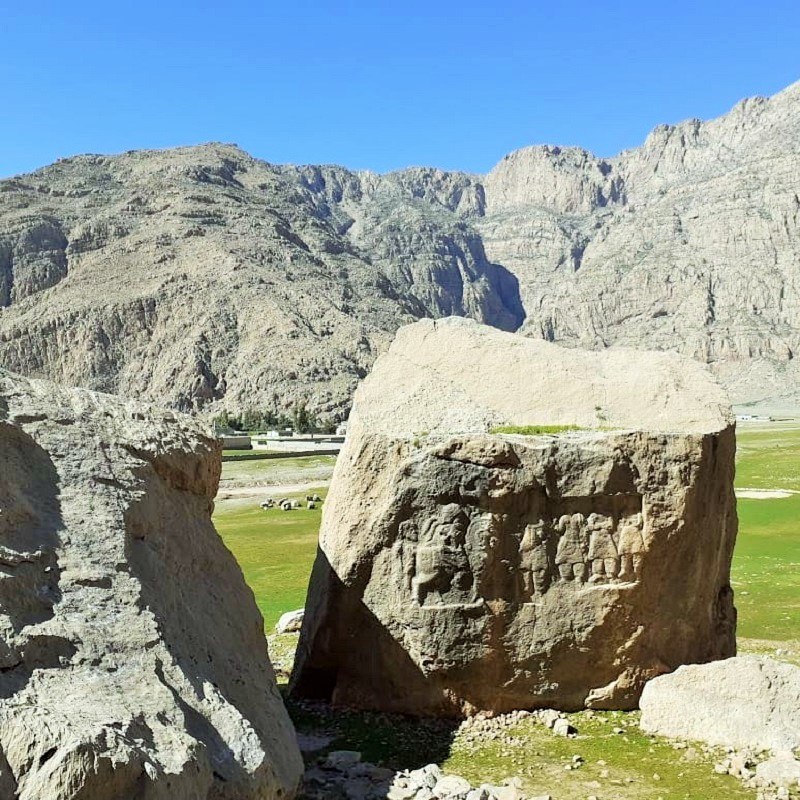
This monument is located 12 kilometers north of Izeh and near Miangaran Lake. This relief depicts the government of Elam. It forms a major historical landscape of Izeh.
Kool Farah
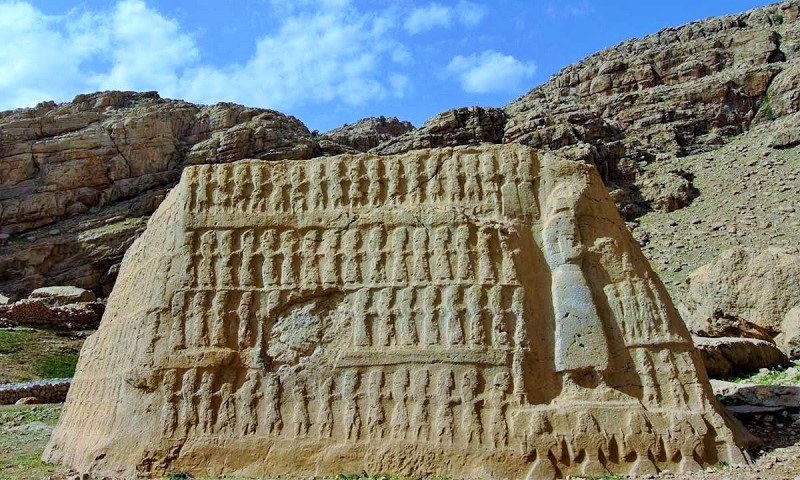
This area is located 7 kilometers northeast of Izeh. People used this monument as an open temple in the New Elam Era.
In addition, we can see six relieves with Elamite inscriptions (in the cuneiform script) in this area. Each text provides valuable historical information. In these reliefs, we can see Elamite traditions and religious customs.
Eshkaft-e Soleyman
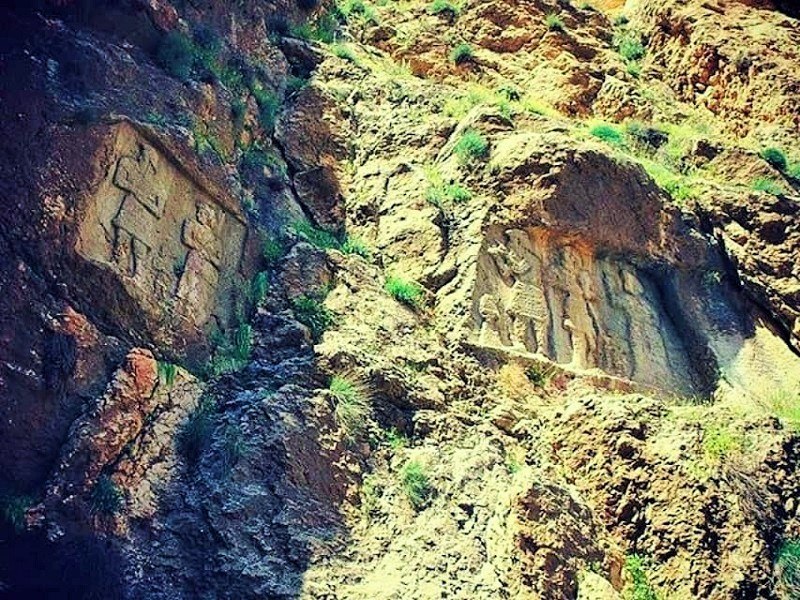
This historical monument is a gorge located in Mount Elahak in the southwest of Izeh. You can discover a good example of the natural historical landscape of Izeh here. There are four relieves in this gorge that all refer to the royal family and the Elamite gods.
Khunag-e Yarali Vand
This is an ancient monument located 3 kilometers from Khunag-e Azhdar District. The monument shows the relief of two persons in a ritual.
Khunag-e Kamalvand
This monument is located 2 kilometers north of Izeh. There is an Elamite inscription on it where there is the relief of a king depicted along with the high-ranking officials.
Kazhdomak Castle
The castle was abandoned probably during Ardashir, the Sassanid king. Izeh was one of the most populous cities in the Sassanid period.
Rock Inscriptions of Shiman Village
Shiman is a district of Izeh, in Khuzestan Province of Iran. This village is 65 kilometers away from Izeh. Despite being located in Khuzestan where the weather is often warm, the village enjoys a good climate all year round. The rock inscriptions of Shiman Village belong to the Parthian Period and show the stories of that period.
Shami Graveyard
This graveyard dates back to the Parthian period. It is located in Pian Rural, Izeh, 21 km away from Izeh.
Shivand Village
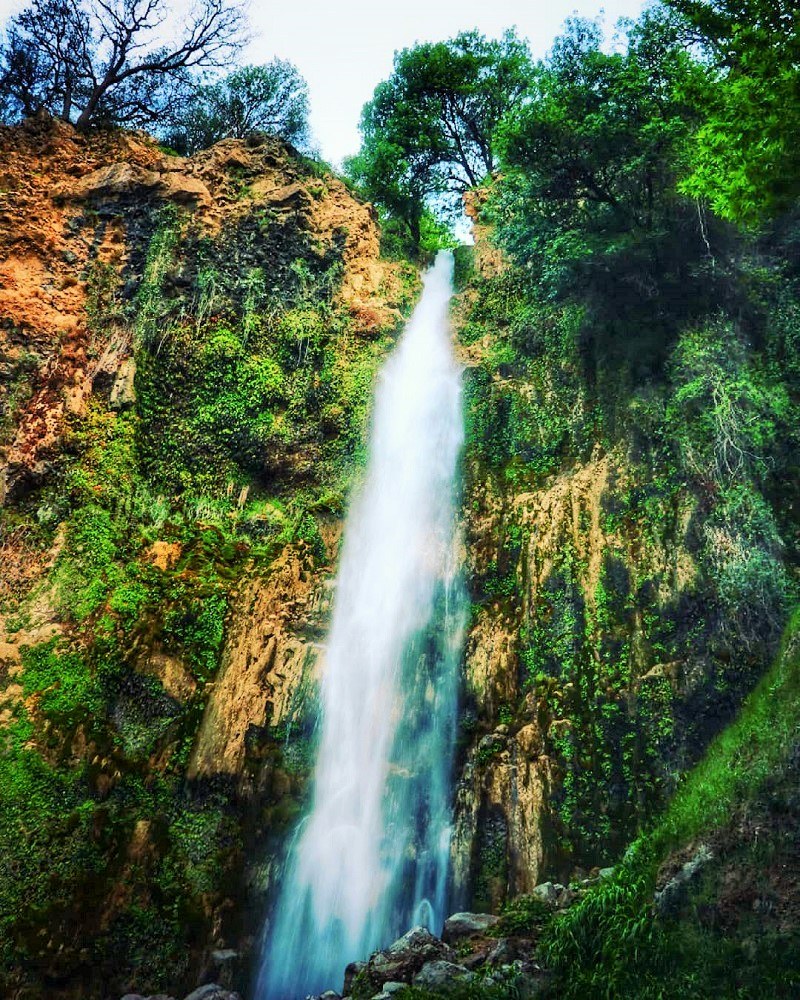
This village is located in the north of Izeh, in Khuzestan Province surrounded by the Zagros Mountains on the one hand and by Karun dam and river on the other hand. Shivund Village is located in Mongasht and Shaloo Protected Areas.
Shivand waterfall (the highest waterfall in Khuzestan) is among the attractions of this village. The height of this waterfall is about 90 meters and flows through the mountains of Mongasht. Here are the monuments forming the natural historical landscape of Izeh near this village:
- An old caravansary of the Safavid era
- Two mills with a graveyard and old tombstones
- A ruined castle of the third and fourth millennia BC
- An old dungeon used once as a prison with a depth of 25 meters
- Historical inscriptions and relieves of the Parthian period
Statue of Parthian Noble Man
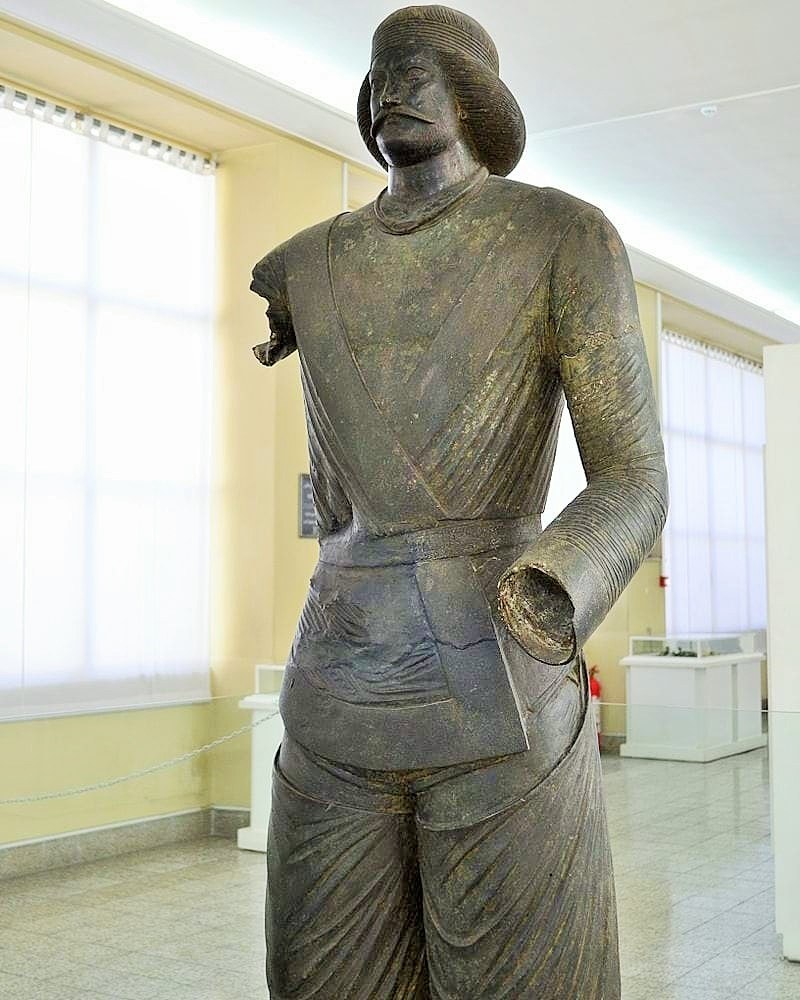
The statue of Parthian Noble Man or Shami man is one of the major remains of Parthian art. The statue is preserved in the National Museum of Iran and is made of hollow bronze. The archeologists attribute this statue to Surena, the well-known Parthian leader. The researchers found this statue in Shami Village in Izeh City.
Arg-e Atabaki (Taq-e Tavileh)
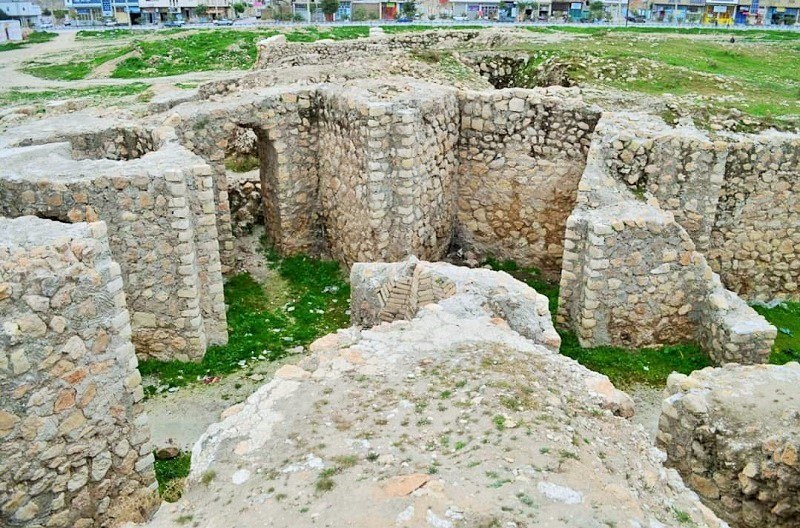
This monument dates back to the Ilkhanid and Timurid periods. It is an inscribed national heritage of Iran. The castle has an area of about 25,000 to 30,000 meters. So far, the archeologists have found four corners of the monument with some walls and three rooms in good condition during their excavations.
It was originally a caravansary and then changed into the stables for the horses of Khans. It is now located in the residential and commercial parts of Izeh.
Papila Bridge
The Sassanid Papila Bridge is located near Sheikh Village in the Susan section of Izeh, Khuzestan Province. The bridge is an ancient road that remained from the Sassanid era. Furthermore, it connects the two sides of the Karun River. Today, only its massive stone bases have remained.
Comparison with Similar Attractions
Elamite kings were very interested in urbanization. They also paid great attention to recording important events on the rock. We can say that the inscriptions were a common tradition of kings in the Elamite period. Following are similar examples of Elamite art compared to the monuments of Izeh city.
Choqa Zanbil Ziggurat
It is a UNESCO World Heritage Site. Choqa Zanbil is located in Khuzestan Province, southeast of the ancient city of Susa. Untash-Napirisha, king of Elam during the Middle Elamite period, constructed Choqa Zanbil around 1250 BC to worship the guardian god of Susa.
The invasion of Ashurbanipal destroyed this monument as well as Elamite Civilization. Then, it was abandoned for more than two thousand years until the archeologists found it under the ground during some excavations in the 20th century.
Historical Objects Remained from the Elamite Era
Here we introduce some of the Elamite objects excavated recently:
- A pot with a two-horn creature
- A silver statue of a sitting cow
- Helmet decorated with a bird and three figures
- Statue of the golden hand god
- A tableau of Worshiping Ceremony of the Sun Nuns
- Napir Asu Statue of the Louvre Museum (a bronze statue of 1250 BC)
- Azure Cuckoo Statue
- Rock relief of Goat with fishtail
- Elamite relief in Naqsh-e Rostam
- Rock relief of the Elamite Woman and the Handmade
- Rock relief of the Commemoration of Ontash Napirisha
- A silver cup of the Elamite Woman (dating from the third millennium BC)
- Elamite Metal Statue (dating back to 3000 BC)






